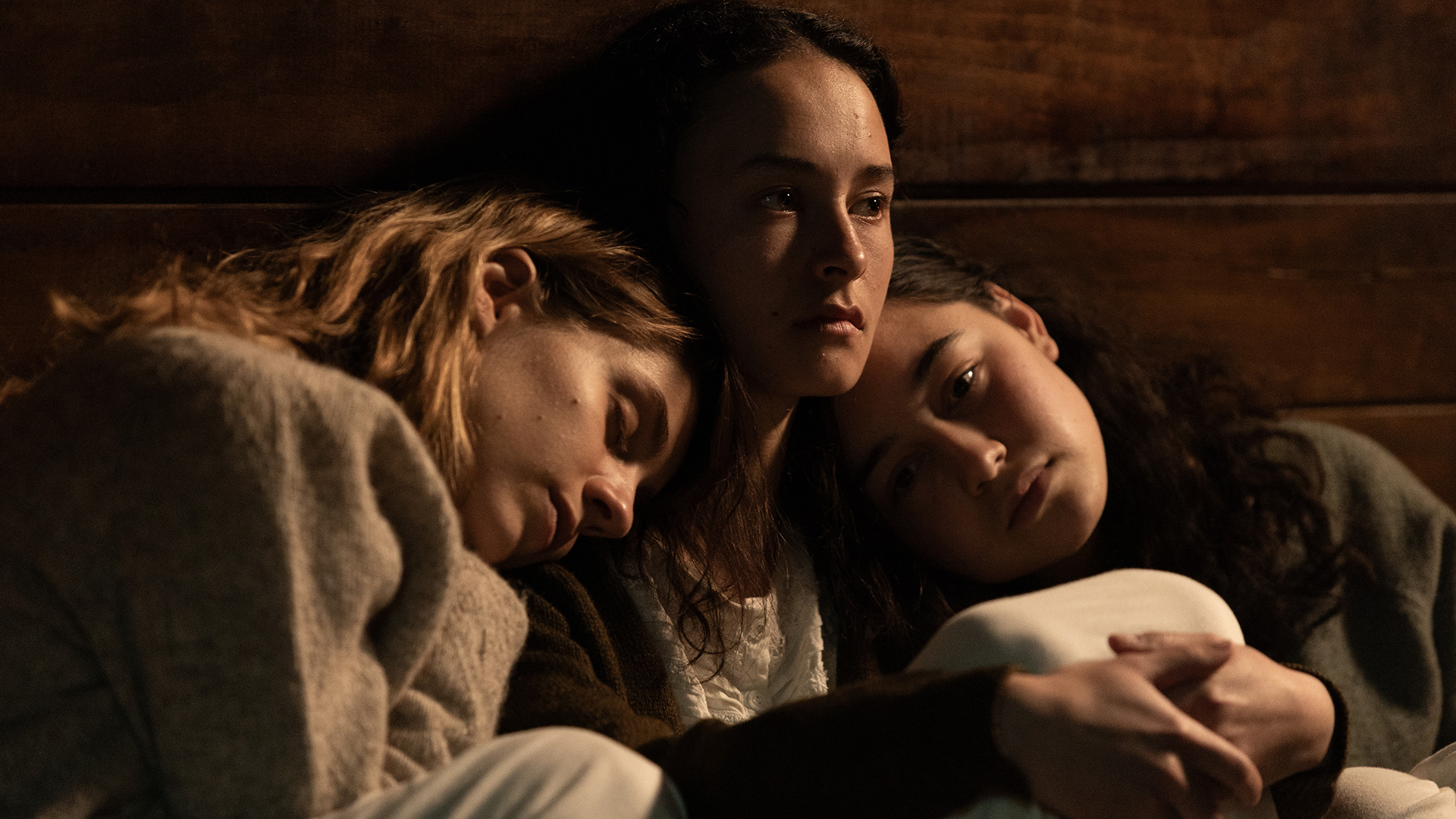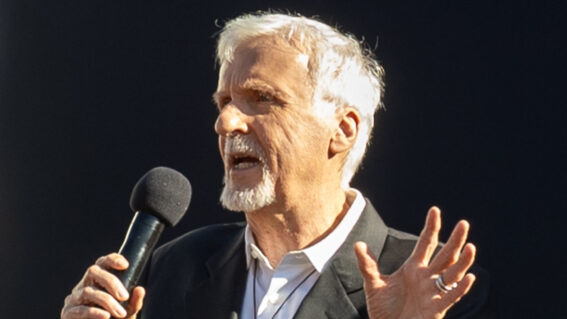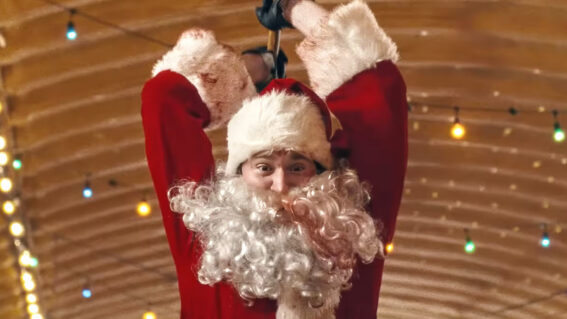Josephine Stewart-Te Whiu on balancing heavy history with the lightness of friendship
The director of We Were Dangerous speaks on her feature debut, working with younger actors, Rima Te Wiata improv, and more.

Writer-director Josephine Stewart-Te Whiu chats to us about her feature debut We Were Dangerous, working with younger actors, Rima Te Wiata improv, balancing the heaviness of history with the lightness of friendships, and “auditioning” islands across the country.
The nationwide release for We Were Dangerous, writer-director Josephine Stewart-Te Whiu’s feature debut, feels like a victory lap. The film’s travelled to Europe, Australia, and America’s SXSW (where it won the special Jury Award for Filmmaking in the Narrative Feature Competition) before opening this year’s Whānau Mārama New Zealand International Film Festival.
“I’ve been wanting to show it at home for a long time,” Stewart-Te Whiu told me over video chat, the day before her film opened the Auckland leg of NZIFF. “Particularly Auckland. I grew up here. My friends and my family are here. Yeah, that’s gonna be a big night for me.”
Set in 1954 New Zealand and working from a script by writer-cartoonist Maddie Dai, We Were Dangerous stars Erana James (Uproar), Nathalie Morris (Bump), and newcomer Manaia Hall as a trio of girls who band together within the confines of an institution for delinquent girls operating on an isolated island.
In many ways, it’s a classic story of teenagers fighting against an unfair system—an aspect that drew Stewart-Te Whiu to Dai’s script. “The rebellious nature of these three young women [I] very much saw myself in. Even the ensemble cast, you got the sense that they were all outsiders or outcasts in the most beautiful, brilliant way.”
When working with the younger members of the cast, Stewart-Te Whiu shared her method of directing them to an authentic place. “The script is amazing but when it comes to shooting, I don’t get fixated on it. As long as the truth of the scene or character is there, I don’t get overly worried.
“Manaia Hall, who plays Daisy, [has] never acted before. I’m not going to get hung up on her getting her lines. I put my focus into believing her as this character. And if that means she goes off script a little bit or interpreted things to make sense for her, then that’s what I’ll roll with.
“I prep my experienced actors to go with it, so [there’s] an element of improvisation for the other characters, too. They can’t get thrown if the young actor doesn’t get their line right or if they offer up something different to the script. They’re encouraged to roll with that as well.”

Left to right: Nathalie Morris, Erana James & Manaia Hall
One of those experienced actors, national treasure Rima Te Wiata, proved a perfect fit for the film both on- and off-screen. “She’s amazing, Rima. She was incredibly patient with our younger actors. Watching her work would have been a real privilege for them. It was a privilege for me to work with her.
“Once she was comfortable, I’d let the camera roll, so she would improvise beyond what was on the paper. One of the classroom scenes, she talks about Adam and Eve and the leaf. That wasn’t in the script, she just improvised that whole section, and it was so brilliant. In the edit, I recut that scene to [make it] fit.”
In her intro for the film at the screening I attended, Stewart-Te Whiu emphasised the story as a work of fiction. It’s not something I hear filmmakers say very often, so I was curious why the director made that emphasis.
“It’s twofold,” Stewart-Te Whiu replied. “The first is that, as you know, the Royal Commission has come up with survivors of various government institutions, and the people who have gone through that are still very much alive. It was really important to me that we differentiated that this wasn’t a direct experience of someone who went through that.
“I [also] think in New Zealand, particularly when we look at our history through cinema, it can be really heavy and our retelling of that does fall quite hard into drama. I don’t think there’s anything wrong with it, but I don’t want the film to get boxed into that, and I don’t want people to feel like this film is inaccessible for them, [that] it’s going to be this hard, heavy, film about mistreatment of young people in state care.
“There is very much an element of that but the flip side—which is very prevalent in the film, I would argue—is the joy, lightness, and celebration of friendships. There are elements of the trauma but I feel like we’ve also balanced the darkness with the light. You can’t have one without the other.”

Aotearoa has a particularly interesting history when it comes to turning islands into rehab centres, one that’s been prevalent with the film from the script. “The film was never written for any specific island,” Stewart-Te Whiu explained, “but it was inspired by Matiu / Somes Island in Wellington harbour. Mattie Dai grew up in Wellington and she’s got a long family historical connection to their island.
“We scouted that island and loved it. But what was difficult for us. The island is a 45-minute boat ride away. That’s an hour and a half of your shoot day, just on boat travel. The island is also protected and pest free, which is amazing, but as a result, it means that if we were to film on that island, all of our camera gear, our boots, our bags, would have to get searched daily and swept daily, which would take up to an hour. Once we started adding all these things up, it didn’t become very viable to shoot there.”
Rotoroa Island came to my mind, which is an easy boat ride away from Auckland and was run by The Salvation Army as a rehab facility for alcoholics for almost a century. Unfortunately, Stewart-Te Whiu had to rule out the country’s biggest city. “It’s a shame because they have gotten rid of a lot of their old period buildings on those islands. It would have [also] been very expensive to paint out the [modern day] Auckland Harbour, and it’s so busy with all the boats, yachts, shipping containers coming through… Auckland, unfortunately, got a big X through it quite early.”
After “auditioning” a bunch of islands, the production eventually settled on Ōtamahua / Quail Island for the role. “Unfortunately for Ōtamahua Island, it’s not pest free. But it is still very close to a city centre and it had the barracks, where they do the dancing and they eat their dinner. That’s a real historical building [on the island] from the war [and] its leprosy days. That’s why we chose it. We built all the huts that [the characters] slept in, they did not exist in real life, that was our amazing art department team.
“We had a really amazing Associate Producer Kerepeti Paraone, and he is from [local iwi] Ngāti Wheke. He told me some amazing stories about the island. They never lived there, Ngāti Wheke, but young kids would be sent over to the island, collect bird eggs, and bring them back.
“Also, another odd history of the island: during the 1950s, a girls state care school used to be sent there for their summer breaks and work on the island.”

As this stage of the interview, I asked Stewart-Te Whiu for her most memorable of the shoot. Unfortunately, I can’t share it as the scene in question is a BIG spoiler, but the anecdote did involve some controlled destruction, a 45-minute window to capture the shot, one amazing cinematographer (María Inés Manchego), and no opportunity for a reshoot. “It felt crazy and wild,” Stewart-Te Whiu remarked.
Before we signed off, I asked Stewart-Te Whiu for any movie or TV recommendations. “I think my favourite film that I’ve watched this year has been Perfect Days by Wim Wenders. I just loved it. I thought it was the most wonderful, joyful meditation on life. I love that his wife is a fine artist, and she made the dream sequences. I just sat there and cried… at the end of the film. It’s so beautiful because nothing really happens, but everything happens. It just felt really refreshing. I loved that people are still able to make films like that.
“And I really enjoyed 3 Body Problem. I love my art house, but I also fucking love my sci-fi fantasy. It was fun. I watched it out of a loyalty to Jess Hong and then I was like, ‘This was really, really fucking good.’ I binged that. I could not predict where they were going to take me.”


























